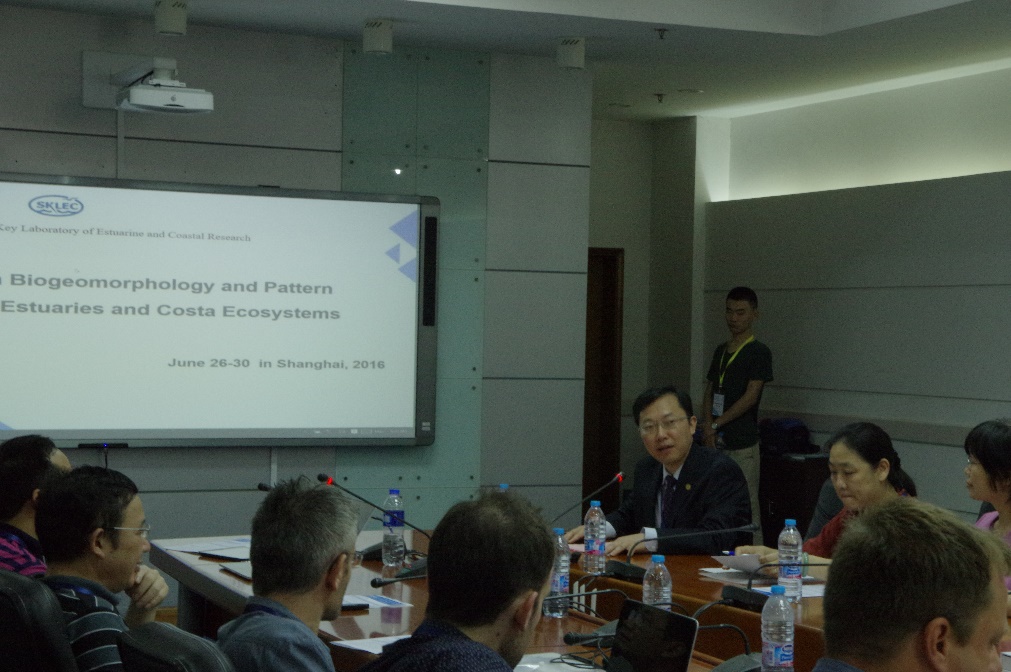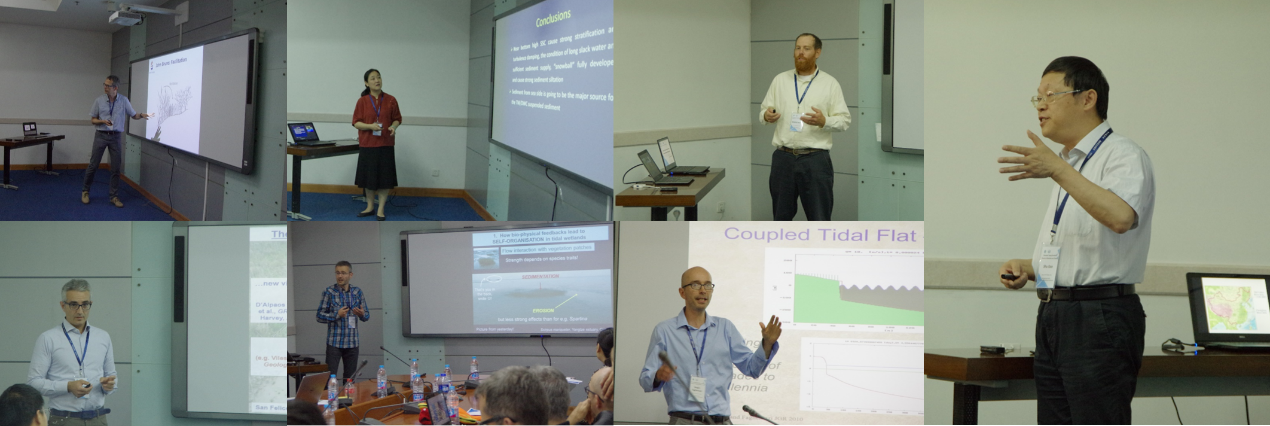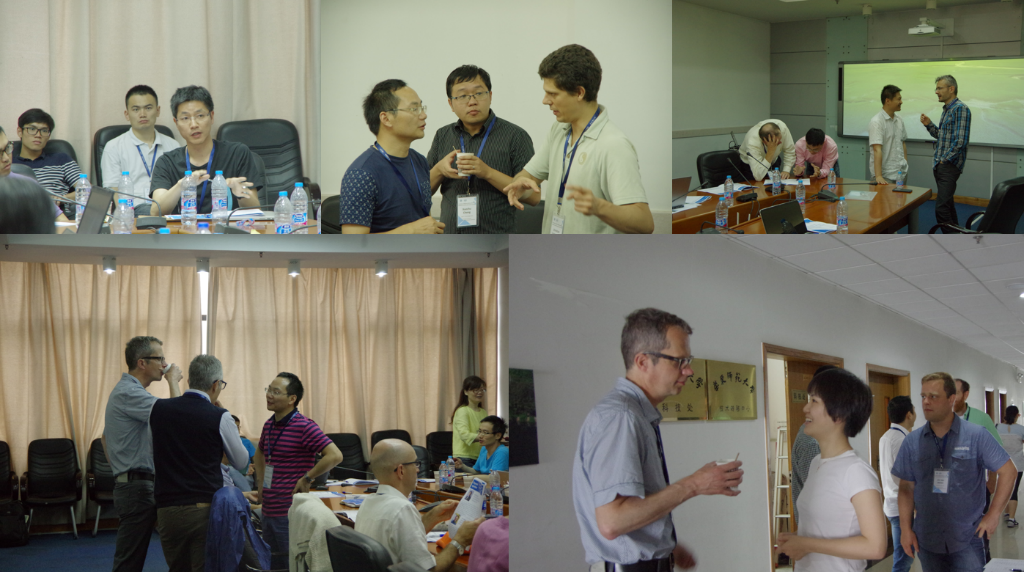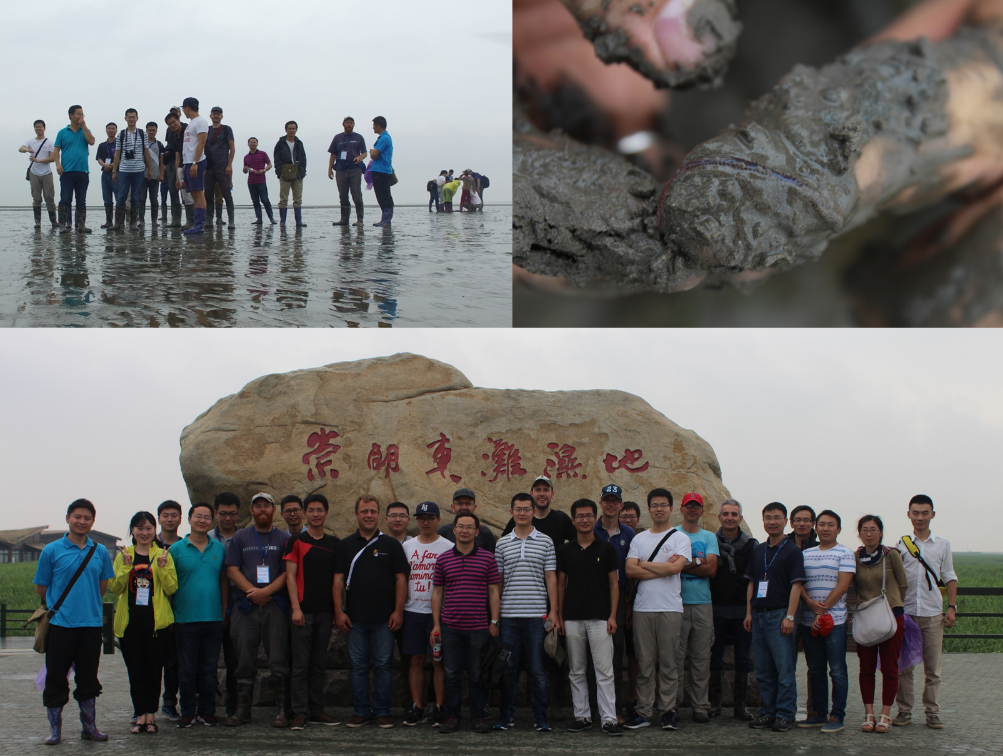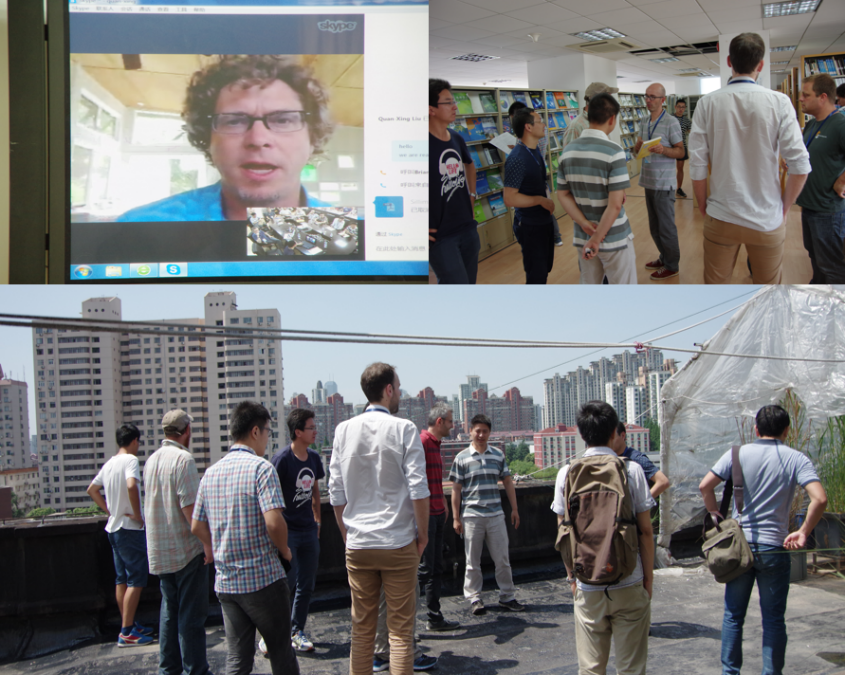On June 27-30, 2016, SKLEC Workshop: Biogeomorphology and pattern formation on estuaries and coastal ecosystems was held in ECNU’s Zhongbei campus. Mr. Rongming Wang, Vice principal of ECNU attended the opening ceremony.
Many famous foreign experts were invited to this workshop: Prof. Andrea D’Alpaos, Department of Geosciences, University of Padova; Prof. Johan van de Koppel, Department of Estuarine and Delta Systems (EDS), Royal Netherlands Institute for Sea Research; Prof. Matt Kirwan, College of William and Mary, Virginia Institute of Marine Science; Prof. Sergio Fagherazzi, Department of Earth Sciences, Boston University; Prof. Stijn Temmerman, Ecosystem Management Research Group, University of Antwerpen. Prof. Brian R. Silliman(Video Session), Division of Marine Science and Conservation, Duke University. The purpose of this workshop is to discuss the urgent need for focusing the combined intellect of mathematicians and ecologists on significant ecological and environmental problems in both the theoretical and applied realms in estuaries, coastal and marine ecosystems. There are 17 outstanding presentations in the workshop, and more than 40 researchers shared new research results and various insights on the following topics: Fine sediment dynamics and source-sink transformation in response to human activities in the Yangtze Estuary; Impact of mussel beds, regular pattern of mussel beds may improve primary production, affect landscape morphology, community structures and intertidal food chain, and interactions between biological and physical process may create conspicuous patterns in intertidal habitats, may affect landscape forming process, and considered human effects in estuarine management; A one-dimensional biomorphodynamic model of tidal flats: Sediment sorting, marsh distribution, and carbon accumulation under sea level rise; Bio-geomorphologic modeling of emerging intertidal wetlands; Windows of Opportunity (WoO) for saltmarsh vegetation establishment: the importance of hydrodynamic forcing; Signatures of biologic-geomorphic feedbacks in tidal environments; -Tidal wetlands in a changing world: self-organization, sustainability and role in climate adaptation; Response of marshes to sea level rise, ecological and geomorphic factors; Biogeomorphic processes influencing salt marsh sedimentation, Jiangsu coast, eastern China; Nonlinear dynamics and alternative stable states in salt marshes and mangroves, etc.
The reports caused participants’ interest, and they had deep discussion.
28th June, most of participants attend filed investigation in Chongming Island. They discussed many scientific issues about Chongming Island, such as vegetation species identification, its spatial distribution, physical characteristics, comparing the characteristics of different species in China and abroad, the evolution processes of the tidal channel and tidal creek, and interactions among vegetation, hydrodynamic, and morphology.
In the morning of 30th June, firstly, Prof. Brian Silliman delivered a keynote speak via skype on species interactions and ecosystem stability. During the tea break, all participants visited our laboratory, lab equipment, library, etc. Then, all experts had a discussion on development of estuarine intertidal ecosystem, and the possibility of future cooperation on some research.

